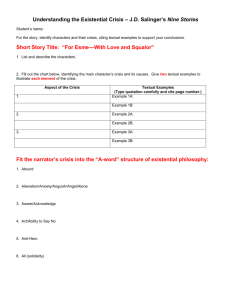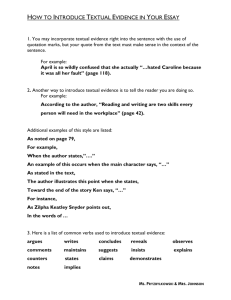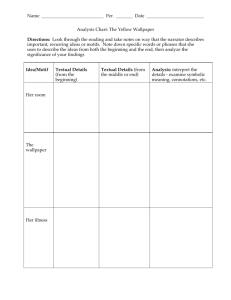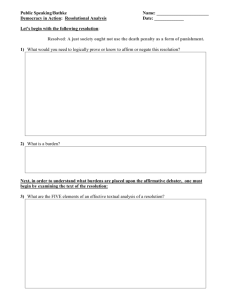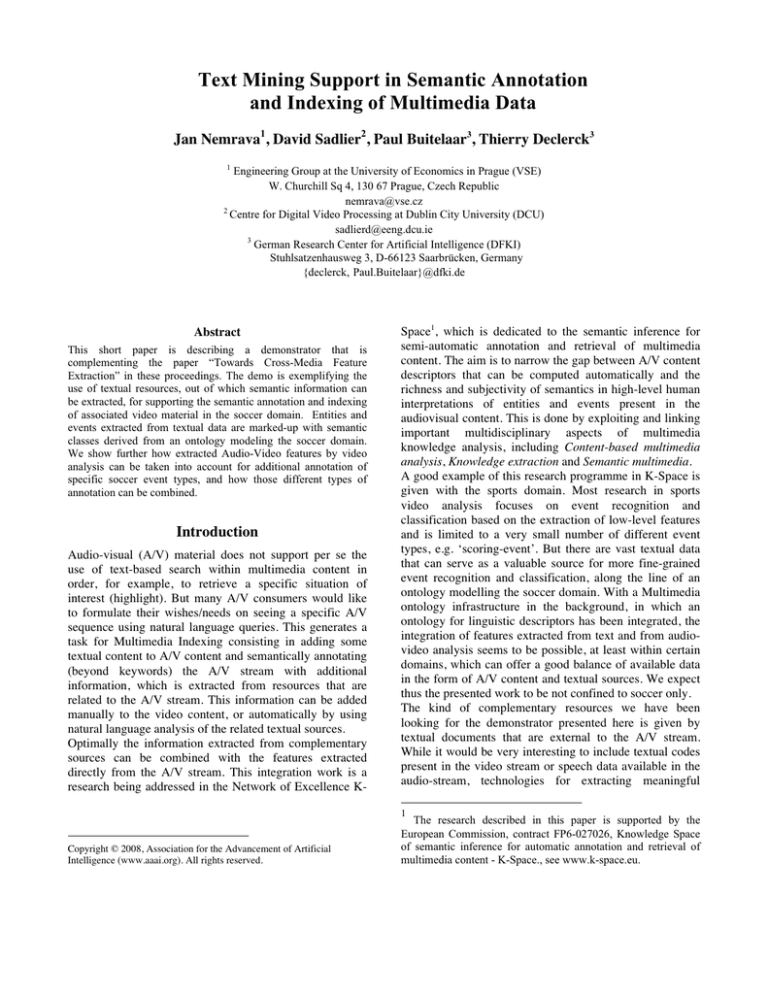
Text Mining Support in Semantic Annotation
and Indexing of Multimedia Data
Jan Nemrava1, David Sadlier2, Paul Buitelaar3, Thierry Declerck3
1
Engineering Group at the University of Economics in Prague (VSE)
W. Churchill Sq 4, 130 67 Prague, Czech Republic
nemrava@vse.cz
2
Centre for Digital Video Processing at Dublin City University (DCU)
sadlierd@eeng.dcu.ie
3
German Research Center for Artificial Intelligence (DFKI)
Stuhlsatzenhausweg 3, D-66123 Saarbrücken, Germany
{declerck, Paul.Buitelaar}@dfki.de
Abstract
This short paper is describing a demonstrator that is
complementing the paper “Towards Cross-Media Feature
Extraction” in these proceedings. The demo is exemplifying the
use of textual resources, out of which semantic information can
be extracted, for supporting the semantic annotation and indexing
of associated video material in the soccer domain. Entities and
events extracted from textual data are marked-up with semantic
classes derived from an ontology modeling the soccer domain.
We show further how extracted Audio-Video features by video
analysis can be taken into account for additional annotation of
specific soccer event types, and how those different types of
annotation can be combined.
Introduction
Audio-visual (A/V) material does not support per se the
use of text-based search within multimedia content in
order, for example, to retrieve a specific situation of
interest (highlight). But many A/V consumers would like
to formulate their wishes/needs on seeing a specific A/V
sequence using natural language queries. This generates a
task for Multimedia Indexing consisting in adding some
textual content to A/V content and semantically annotating
(beyond keywords) the A/V stream with additional
information, which is extracted from resources that are
related to the A/V stream. This information can be added
manually to the video content, or automatically by using
natural language analysis of the related textual sources.
Optimally the information extracted from complementary
sources can be combined with the features extracted
directly from the A/V stream. This integration work is a
research being addressed in the Network of Excellence K-
Space1, which is dedicated to the semantic inference for
semi-automatic annotation and retrieval of multimedia
content. The aim is to narrow the gap between A/V content
descriptors that can be computed automatically and the
richness and subjectivity of semantics in high-level human
interpretations of entities and events present in the
audiovisual content. This is done by exploiting and linking
important multidisciplinary aspects of multimedia
knowledge analysis, including Content-based multimedia
analysis, Knowledge extraction and Semantic multimedia.
A good example of this research programme in K-Space is
given with the sports domain. Most research in sports
video analysis focuses on event recognition and
classification based on the extraction of low-level features
and is limited to a very small number of different event
types, e.g. ‘scoring-event’. But there are vast textual data
that can serve as a valuable source for more fine-grained
event recognition and classification, along the line of an
ontology modelling the soccer domain. With a Multimedia
ontology infrastructure in the background, in which an
ontology for linguistic descriptors has been integrated, the
integration of features extracted from text and from audiovideo analysis seems to be possible, at least within certain
domains, which can offer a good balance of available data
in the form of A/V content and textual sources. We expect
thus the presented work to be not confined to soccer only.
The kind of complementary resources we have been
looking for the demonstrator presented here is given by
textual documents that are external to the A/V stream.
While it would be very interesting to include textual codes
present in the video stream or speech data available in the
audio-stream, technologies for extracting meaningful
1
Copyright © 2008, Association for the Advancement of Artificial
Intelligence (www.aaai.org). All rights reserved.
The research described in this paper is supported by the
European Commission, contract FP6-027026, Knowledge Space
of semantic inference for automatic annotation and retrieval of
multimedia content - K-Space., see www.k-space.eu.
interpretation out of this textual and speech data is still not
accurate enough. But, as in the case of soccer good quality
complementary textual data, closely related to the A/V
stream, is available in various formats, we could start our
work on the possible integration of textual and audio-video
features on a good empirical base.
complementary resources, which are accounted for in
“minutes” or even larger temporal interval, these extracted
and semantically organized events can act as indicators for
video segment extraction and semantic classification.
Cross-Media Feature Extraction in the Soccer
Domain
We described a demonstrator (depicted in figure 1 below) that
implements an approach using the results of ontology driven
natural language analysis of textual resources that are
complementary to soccer A/V streams for supporting their
semantic indexing and retrieval. We further presented event
detection in the video based on general A/V detectors. Features
extracted from both analysis types are temporally aligned, and so
the video indexing and retrieval can be refined with semantics
extracted for the complementary resources. As such extraction of
A/V features is supported by textual evidence, and as textual
extraction can possibly also be supported by evidence of features
extracted from the A/V stream, our demonstrator is showing a
good example of an implementation of research in the field of
“cross-media feature extraction”.
In the demo presented here, we are dealing for the textual analysis
with structured web data (tables with teams, player names, goals,
substitutions, etc.) and unstructured textual web data (minute-byminute match reports). Information on entities and events
extracted from those documents are stored as instances of
semantic classes derived from SWIntO, the SmartWeb soccer
ontology [2], by use of the soccer instantiation of the IE system
SProUT [3], which was also developed in the SmartWeb project
[4]. The temporal information associated with such instances
extracted from the textual sources is normally expressed in
minutes (the point in time in which events are reported). Those
instances can then be used for the semantic indexing and retrieval
of soccer videos.
This approach was followed in some respect earlier in the
MUMIS project [1], and our work in K-Space builds on results of
this project, but additionally aims at the extraction of A/V
features. Feature detectors applied in the demonstrator are motion
activity measure, crowd detection, speech-band audio activity,
presence/absence tracking, field-line, and close-up, and are
combined by means SVM (Support Vector Machine). We
consider those features as being relevant for specific soccer event
types, e.g. a CornerKick event will have a specific value for the
field-line feature (EndLine), a ScoreGoal event will have a high
value for the audio-pitch feature, etc.
Through the temporal alignment of the primary A/V data
(soccer videos), which are available in “seconds” with the
Conclusions
Short References
[1] http://www.dfki.de/pas/f2w.cgi?ltc/mumis-e
[2] http://www.dfki.de/sw-lt/olp2_dataset/
[3] http://sprout.dfki.de/
[4] http://smartweb.dfki.de/
[5] Sadlier D and O'Connor N.: Event Detection in Field Sports
Video using Audio-Visual Features and a Support Vector
Machine. IEEE Transactions on Circuits and Systems for Video
Technology, Oct 2005
[6] D. Yow, B-L. Yeo, M. Yeung and B. Liu, “Analysis and
presentation of soccer highlights from digital video,” Proc. Asian
Conference on Computer Vision1995, Singapore.
Extracted Entities and Events
- from tables and textual match summaries -
A/V Stream
Figure 1: The figure on the left shows a
snapshot of our SMIL-based demo and
illustrates the approach and the resources
used in our work The user can navigate
through a cross media information display,
but can also query using different and
combined media indicators.
A/V Features
Analysis
Complementary Text
Resources
Non-linear event
and entities browser
-minute-by-minute
- match reports -


